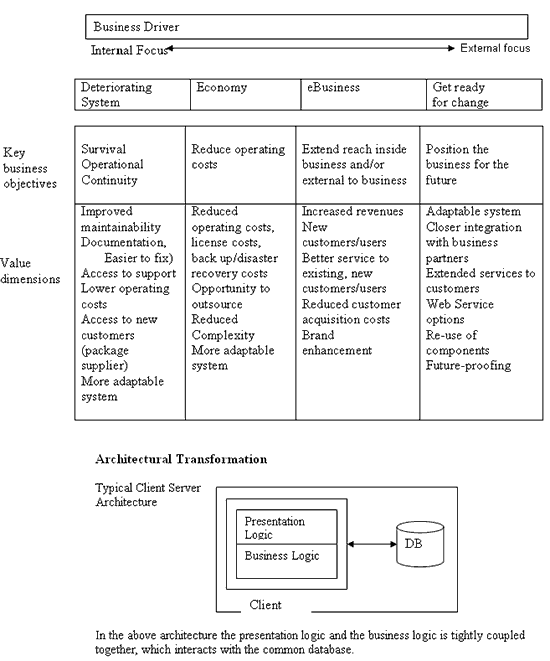Contribute
| Technology: Migration – Legacy Systems To 4GL Technology - Part I |
Vidya Jagannathan
09/28/2005
Legacy applications are frequently large, monolithic and difficult to
modify, and scrapping or replacing them often means reengineering an
organization’s business processes (workflow) as well. Legacy migration
is about retaining and extending the value of the legacy investment
through migration to new platforms.
Re-implementing
applications on new platforms in this way can reduce operational costs,
and the additional capabilities of new technologies can provide access
to valuable functions such as Web Access to the client. Once migration
is complete the applications can be aligned more closely to current and
future business needs through the addition of new functionality to the
migrated application.
In short, the legacy migration process
can be a cost-effective and accurate way to preserve legacy investments
and thereby avoid the costs and business impact of migration to
entirely new software.
The goal of legacy migration is to
retain the value of the legacy asset (which has been built and
stabilized over a period of time) on the new platform. In practice this
migration can take several forms. For example, it might involve
translation of the source code, re-architecting (Client server to
Multi-tier, which is common application deployment platform) or some
level of re-use of existing code plus a Web-to-host capability to
provide the customer access required by the business.
Migration - Business Driver
Developments in Legacy Migration provide an opportunity for the
business to review its legacy portfolio. To migrate or replace, to
scrap or re-invest (re-write the whole application). These drivers are
contrasted in the following diagram, suggesting that there can be quite
a variation in the value that the business will be looking for from a
migration.

In the above
architecture the presentation logic and the business logic is tightly
coupled together, which interacts with the common database.
Why Migrate, Why not Re-write?
Software experts use the terms migration and conversion
interchangeably. For simpler understanding we shall use migration
through out this document. This activity of migration involves the
change of either the programming language or the data management
technology or may be in certain cases both. In most of the cases, both
are not changed simultaneously. The hardware, operating system and
related system calls are not changed. Further more the design of the
application; the programming logic and its structure are retained.
Similarly, in the case of data management technology, the existing
physical data model is retained as far as possible. Data structures and
data elements are retained as they are.
The major
reasons why the application needs to be migrated and some overall
benefits of migration. Business today urges openness and direct access
in terms of its manifest to targeted business world through
cutting-edge technology. Thus, the new role of existing systems today
is to provide the business capabilities on open and distributed
technological architecture for global access of information. Other
benefits and migration tools will be discussed in the next issue.
You may also access this article through our web-site http://www.lokvani.com/
